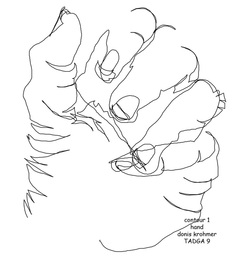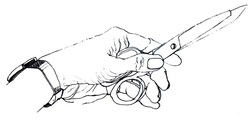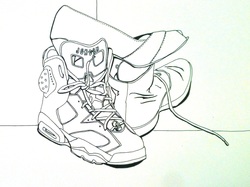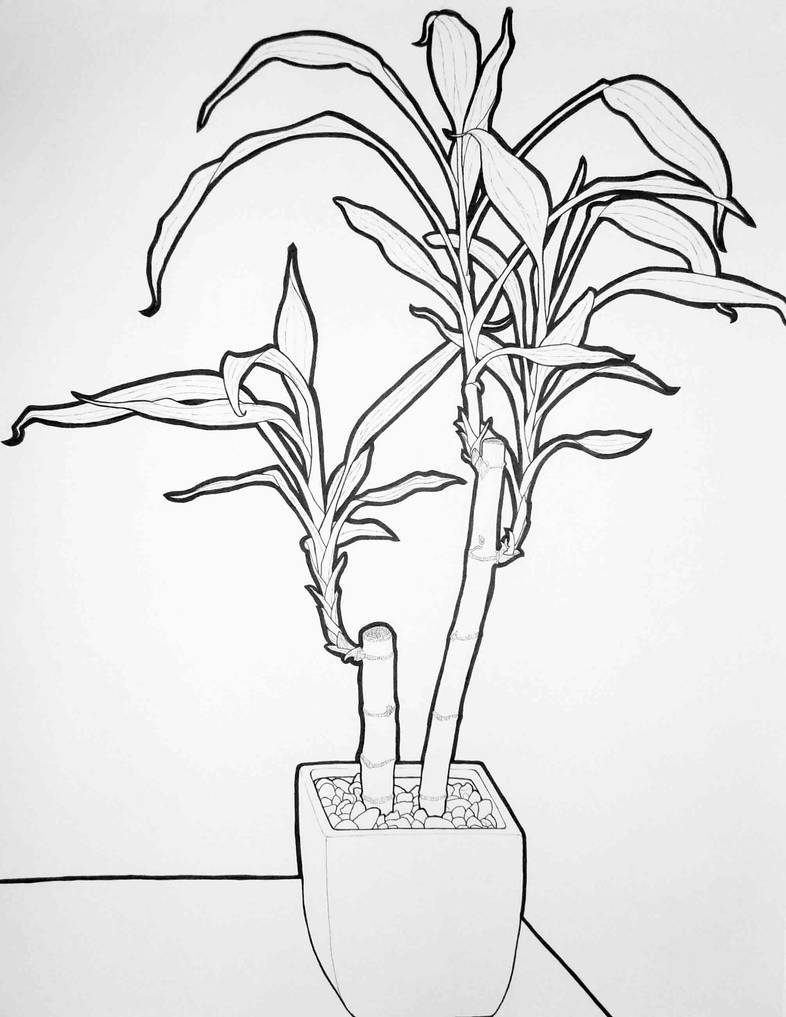Summer 2019 Drawing 1
Thomas Everett Green
Office
hours: Before Class or by appointment
E-mail:
thomas.green@mca.edu Phone: (615)
474-6511 Call or text
"Nothing in the world can take the place of
persistence. Talent will not; nothing is
more common than unsuccessful men with talent.
Genius will not; unrewarded genius is almost a proverb. Education will not; the world is full of
educated derelicts. Persistence and
determination alone are omnipotent."
-
Calvin Coolidge, 30th President of the U.S.
Basic
Drawing I is an introduction class which will expose the student to a
number of traditional skills and ideas that have occupied artists throughout
history. The class involves drawing from
direct observation with an emphasis on space, volume, linear and free hand
perspective, and other basic techniques and concepts. In Basic
Drawing I there is an emphasis on line as the principle conveyor of form.
The student is expected to develop disciplined work habits and an understanding
of the visual artist's formal language.
There will be regular class critiques and a required sketchbook.
Course Outcomes:
Upon
successful completion of the course the student's work will demonstrate:
·
The ability to draw from observation
·
The ability to use line as the principle conveyor of form
·
The ability to use line to represent volume and space
·
The ability to use linear perspective in the creation of volume and
space
·
Disciplined work habits
·
Read and listen
actively to learn and communicate.
·
Use social skills to
work in groups effectively.
·
Think critically in
evaluating information, solving problems, and making decisions.
·
Respect the rights of
others in the classroom, online, and in all other school activities.
·
Attend class
regularly, complete assignments on time, and effectively participate in
classroom and online discussions, group work, and other class-related projects
and activities.
·
Personal
Responsibility – Abide by appropriate safety rules in laboratories, shops, and
classrooms.
Professional
Practices Outcomes:
- Students
will demonstrate the ability to write an artist statement
- Students
will demonstrate the ability to document their work
- Students
will demonstrate the ability to research to stay current in their field
"There is no such thing as talent. What they call talent is nothing but the
capacity for doing continuous work in the right way."
- Winslow Homer
Attendance
policy
-
Attendance will count as 200 points in this class. Not only will you lose points by being
absent, but you will miss the explanation of important information given in
lectures, and you will miss the opportunity to interact directly with your
peers and instructor. You are paying to
be here. The most important thing you
can do to be successful in college is showing up to class. All students will
work for the entire class period.
Students should not leave the classroom unless they are excused to
conduct research or by permission of the instructor. Excessive talking, walking about or leaving
the room might result in an absence for the class period.
- If you
are having trouble with the course or have problems outside the class that are
affecting your performance please talk to me about it so that we can work out a
solution. Do not wait until it is too
late. I will be glad to help you in any
way I can.
If you miss class or an assignment because,
ask your peers for the assignment and notes.
“Motivation is when your dreams put on work clothes.”
-Author Unknown
Grades:
- Grades
will always be viewable on Canvas.
I do my best to get projects graded as soon as possible.
- Each
assignment will be collected on a specific due date. Persons not handing in work on time will be
penalized one full grade. The work will
be graded and returned as soon as possible.
At times it may be necessary for me to hold some of the drawings for
exhibitions or photographing.
- All
homework may be re-worked for a better grade.
In-class drawings may not be re-worked.
- Final
grades reflect accomplishment in three areas: projects (60%), sketchbook(20%),
and class attendance/(20%)
- Final grades will
be determined by:
- Completion of all assignments.
- Consistency of effort
- Development of skills in seeing
and thinking.
- Presentation and craftsmanship.
- Participation in critiques and
discussions
- Craftsmanship
LETTER GRADE NUMERIC GRADE LETTER GRADE NUMERIC GRADE
A 4.0 - 3.9 C 2.1 - 1.9
A – 3.8 - 3.5 C – 1.8 - 1.5
B + 3.4 - 3.2 D + 1.4 - 1.2
B 3.1 - 2.9 D 1.1 - 1.0
B – 2.8 - 2.5 F 0.0
C + 2.4 - 2.2
Non-Traditional Grading Options:
* I — Incomplete. Indicates that the student performed at a passing level, completed
most of the course requirements, and intends to make up the missing work. An
Incomplete is given only at the discretion of the instructor when the student
has attended regularly, done satisfactory work, and furnished satisfactory
proof to the instructor that the work cannot be completed because of illness or
other circumstances beyond the student's control. * NC — No Credit.
Indicates that the student did not fulfill the requirements for receiving an
"S" grade, an "N" grade or a numerical grade in the course.
A student in good standing may request an "NC" symbol from the
instructor prior to the final examination, granted at the instructor's
discretion. After an "NC" is issued, the course may be repeated no
more than one (1) more time. An "NC" does not affect a student's GPA
but may affect a student’s financial aid or visa status.
Evaluation Rubrics and/or Grading Approach –
Evaluation rubrics are assessment tools used to measure students' work. There
will be a rubric available for each assignment.
Course Withdrawal: If you decide to drop this
course for any reason, and you do not wish your current grade to appear on your
transcript, it is your responsibility to officially withdraw with the
Registrar’s office by the dates listed in the South Seattle College catalog.
“If you always put limits on everything you do,
physical or anything else. It will spread into your work and into your life.
There are no limits. There are only plateaus, and you must not stay there, you
must go beyond them.”
-Bruce Lee
General
Requirements:
- All
EPA/OSHA regulations that apply will be observed in this class. This is required of all students.
- In the
interest of developing an appreciation of quality materials and maximizing the
life span of your work major drawings will be executed on good quality artist
papers. Using lesser types of paper for a finished drawing will result in a
lower grade.
- All work
must be kept in a portfolio. Respect and
protect your work if you expect anyone else to do so.
- All work
that is handed in for grading must have your name printed unobtrusively on the
front or on the back.
- All
finished work must be fixed. Make sure
you have fixative and bring it with you to class.
- Do not
spray fixative in the classroom. It is bad stuff, take it outside.
Materials: Materials have been collated for you in a
packet at the Bookstore. Materials include:
Marker (sharpie or any black marker will do)
drawing pencils 4b 6b HB 2H (get a variety of dark to light pencils
Compressed charcoal (pack of about 4 pieces)
Vine Charcoal (several pieces)
18x24" Strathmore drawing tablet
Kneaded Eraser or Pink Pearl Eraser, or both.
If you don't
have one, you will also need to purchase a 9x12 sketchbook (not in the
packet).
These can be purchased for
about 5 dollars online, or found at Michael’s, Target and other stores.
Sketchbooks should have 75 pages or more, and
should be 9”x12”
You may also order your materials via Artful Touch by clicking on the link here.
Recommended
http://artfultouch.mybigcommerce.com/
Course outline:
SUMMER COURSE OUTLINE
Week 1: Pre instruction Drawings: Contour lines, blind contour, modified blind contour, upside down drawings
Week 2: Negative space drawings--Line Sensitivity
Week 3: line Sensitivity and the Illusion of Space
Week 4: 1 Point perspective
Week 5 2 Point perspective
Week 6 - Week 7 Light logic and Value structures
Week 8 - Self Portrait
SYLLABUS IS SUBJECT TO CHANGE DUE TO INCLEMENT WEATHER OR BY THE DISCRETION OF YOUR INSTRUCTOR. PLEASE COME TO CLASS AND/OR CHECK IN WITH YOUR PEERS IF YOU ARE ABSENT TO KEEP YOURSELF INFORMED OF WHAT IS GOING ON.
“All the effort in the world won't matter if you're not
inspired.”
-Chuck Palahniuk
STUDENT RESOURCES
* Tutoring: South Seattle College is
committed to the success of its diverse student population. Academic support,
drop-in centers, small group tutoring and online tutoring are available to
ensure that students get the help they need and are able to complete their educational
goals. All tutoring is free of charge. The college has several centers that are
open during the week, evenings, and weekends. All of the centers have
experienced, trained tutors available as well as computers with printing
capability. Tutors offer encouragement, flexible schedules, clear explanations,
and help
* Math Tutoring: Drop in help for
students needing assistance in developmental math courses are available in the
Math and Learning Lab (MALL) located in LIB 215/216. Help with college-level
math and science classes is available in the Math and Science Center (MAST)
located in RSB 18.
* Writing Center: You can find
additional writing help at South Seattle Writing Center in LIB 215. There, you
will find FREE assistance to help you successfully complete your writing
assignments for this course. In addition to writing workshops, you can also
sign up to work with a tutor one-on-one to help you through all stages of the
writing process--from understanding your assignment, to outlining, to the
revision and refinement stages of paper writing process. For more information,
please visit: http://www.southseattle.edu/tutoring/writing-center.aspx.
* Northwest E-Tutoring Consortium: An
online-only service. Their e-writing lab allows students to submit a draft of
one’s paper to a tutor, ask for specific feedback, and receive a tutor’s
response within 24-28 hours. Additional services such as live tutoring via chat
and an e-questions discussion board are available for interested students as
well. Visit http://www.southseattle.edu/tutoring/online.aspx for more information.
* Computer Labs: There are computers
at various locations on campus, including the Library and Writing Center. If
you do not have a computer or printer of your own, arrange to use these public
resources well before an assignment is due. Visit http://www.southseattle.edu/computer-labs/ for hours and locations.
* The WALL (Writing and Learning Lab).
Similar to the Writing Center, but more focused on grammar and mechanics. This
is a great place to meet students and create study groups. Located in RSB 16.
* Academic Accommodations: SSC’s
Disability Support Services serves students with a wide array of learning
challenges and disabilities. If you are a student who has a physical or mental
limitation for which you have documentation or have seen someone for treatment
and if you feel you may need accommodations in order to be successful in
college, please contact the Disability Support Service’s office at Robert Smith
Building, room 12, or call (206) 934-5137. Any contacts and/or information will
remain strictly confidential. For more information, please visit: http://www.southseattle.edu/disability-services/
* Religious Accommodations: Students
are entitled to two days of excused absences per academic year for reasons of
faith or conscience or for organized activities conducted by a religious organization.
These absences will not affect your grade, but it is your responsibility to
inform your instructor about the planned absence and to make arrangements to
complete the course work for those days. You must request the excused absence
two weeks’ prior to the date of the absence. If you wish to request an absence
for reasons of faith or conscience, you may obtain a form and guidelines for
completing the form from the division office in UNI.
* call the school’s main number (206)
934-5300 for a recorded message
SPECIAL INSTRUCTIONS
(e.g. lab safety policies, field trip
information, etc. as appropriate) – lab classes must include
* Lab Safety instructions and requirements
* Indication that lab waiver form will need
to be signed and submitted (note that these forms are in the Academic Programs
Canvas shell)
COURSE POLICIES
IMPORTANT STATEMENTS
South Seattle Community College is one of the
most diverse colleges in the Pacific Northwest. While this strength stems from
the demographics of our campus population, we as a community believe our
identity goes beyond that. We strive to create a welcoming learning community
for all. We encourage multiple perspectives and the free exchange of unbiased
and non-prejudicial ideas and experiences, which broaden our understanding of
one another and the world around us. The expectation is that you will join us
in this endeavor by contributing to an accessible, safe, and respectful
classroom environment, free of discrimination and harassment. If you are
offended, hurt or made to feel unsafe by something that either another student
does or says, please let me know. In the same way, please let me know if you
are offended, hurt, or made to feel unsafe by something I say or do. It is my
intention to ensure this classroom is a safe place for all. Visit http://www.southseattle.edu/campus-information/equal-opportunity.aspx to learn more about the college’s efforts to create and foster an
inclusive campus community.
* Equal Opportunity Statement: South
Seattle College is committed to the concept and practice of equal opportunity
for all its students and does not discriminate on the basis of race or
ethnicity, color, age, national origin, religion, marital status, sex, gender,
sexual orientation, gender identity, veteran or disabled veteran status,
political affiliation or belief, citizenship/status as a lawfully admitted
immigrant authorized to work in the United States, or presence of any physical,
sensory, or mental disability, except where a disability may impede performance
at an acceptable level. In addition, reasonable accommodations will be made for
known physical or mental limitations for all otherwise qualified persons with
disabilities.
* Title IX Statement: South Seattle
College is committed to fostering a safe, productive learning environment.
Title IX and our school policy (per WAC 132F-121-110) prohibit discrimination
on the basis of sex, which regards sexual misconduct — including harassment,
domestic and dating violence, sexual assault, and stalking. We understand that
sexual violence can undermine students’ academic success and we encourage
students who have experienced some form of sexual misconduct to talk to someone
about their experience, so they can get the support they need. You can reach
out to me, or any of the following you feel most comfortable with:
* Counselors, 206.934.6409, for appointments
* District Compliance Officer 206.934.3873
* Campus Security, 206.934.0911
ALL reports are handled with utmost consideration
* Mandatory Reporting: As an instructor, one of my responsibilities is to help create a safe
learning environment on our campus, and I also have a mandatory reporting
responsibility. It is my goal that you feel able to share information related
to your life experiences in classroom discussions, in your written work, and in
our one-on-one meetings. I will seek to keep information you share private to
the greatest extent possible. However, I am required to share information
regarding sexual misconduct or information about a crime that may have occurred
on South’s campus with the Title IX Coordinator. ALL reports are handled with
utmost care and sensitivity.
* Emergency Preparedness
In case of an Earthquake: Duck, hold, and
cover-don’t run.
In case of an active shooter: Run, hide,
fight.












